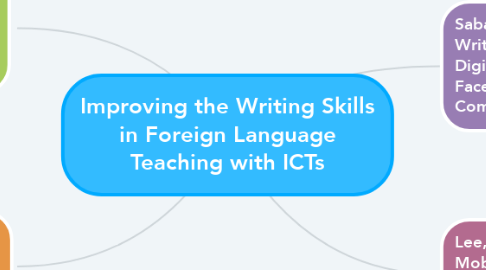Improving the Writing Skills in Foreign Language Teaching with ICTs
par Katy Yeraldin Gonzalez Rincon


1. Sabatino, L. (2014). Improving Writing Literacies through Digital Gaming Literacies: Facebook Gaming in the Composition Classroom
1.1. Lindsay Sabatino proposes the integration of gaming and composition as a way to develop students’ writing practices.
1.2. By including gaming in composition, students can learn how the skills they already use in gaming are relevant to writing and develop an awareness of how they are cultivating these skills.
1.3. By utilizing Facebook games such as Mafia Wars, which students already actively engage with, we can promote growth in student understanding of literacies and composition.
2. Lee, K. J. & Kim, J. E. (2013). A Mobile-based Learning Tool to Improve Writing Skills of EFL Learners.
2.1. Acquisition of knowledge through mobile devices
2.2. Mobile-based English learning tool.
2.2.1. This tool offers two types of learning mode
2.2.1.1. Grammar review
2.2.1.2. Writing practice
3. Robles, H. (2016). Mobile Learning to Improve Writing in ESL Teaching. TEFLIN Journal: A Publication on the Teaching & Learning of English
3.1. Mobile learning refers to the acquisition of knowledge through mobile devices.
3.2. The Functional-Systemic Approach
3.2.1. Students learn to be conscious of three language functions: ideational (language is used to represent experiences), interpersonal (language is used to interact with others), and textual (language is used to construct coherent discourses.
3.3. Genre Pedagogical Approach (GPA)
3.3.1. For many language teachers, this pedagogical approach has been favorable because it offers valuable resources to help all kinds of students to produce efficient texts
